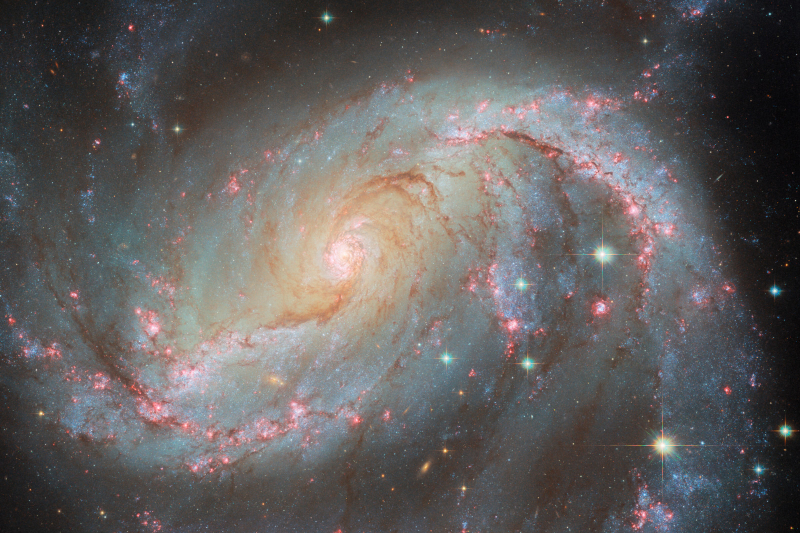The Hubble Space Telescope has sent back an image of a distant spiral galaxy – it managed to capture not only a bright light show in star-forming regions, but also a short supernova explosion, even brighter than all its neighbors.

Image source: esahubble.org
The barred spiral galaxy NGC 1672 is located 49 million light-years from Earth and is observed in the constellation Doradus. The galaxy’s bright light comes from billions of stars fueled by hydrogen gas, and the red in the image shows newly formed and extremely hot stars emitting powerful radiation. Even brighter is the active galactic nucleus – a supermassive black hole that intensively absorbs matter. The ring of gas that feeds it contains many hot young stars, indicated by bright pink spots in the image.
Being home to an active galactic nucleus, NGC 1672 is a Seyfert galaxy. Complementing Hubble’s composition is a Class I supernova called SN 2017GAX, which is clearly visible near the lower right corner of the image. A supernova is a bright explosion that occurs when a giant star reaches the end of its life cycle and collapses. This effect can be brighter than an entire galaxy. Taken in less than a year, images of the galaxy NGC 1672 show that SN 2017GAX is beginning to turn into a small green dot. The difference can be seen on one of the pages of the European Space Agency website, where a visual comparison of the images is presented.